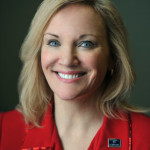Lacey Wallace | Assistant Professor of Criminal Justice, Penn State Altoona
After Adam Lanza opened fire at Sandy Hook Elementary School in 2012, public debate focused on how to prevent future violence.
Some argued that the solution was increased gun control. Others felt that increasing gun ownership would allow citizens to protect themselves. National Rifle Association (NRA) Executive Vice President Wayne LaPierre famously argued that “the only thing that stops a bad guy with a gun is a good guy with a gun.”
In the wake of subsequent mass shootings, most recently in San Bernardino and Colorado Springs, this rhetoric is emerging once again. There are already reports that gun sales have increased following these shootings.
Unfortunately, very little is known about how mass shootings and the fear they cause might actually affect gun purchasing. To find out if mass shootings cause an uptick in gun purchasing, I decided to study trends in background checks before and after six mass shootings, from 2000 to 2009.
Mass shootings and fear
Mass shootings involve a level of violence that is well beyond what occurs in most crimes. The FBI defines mass murder as four or more murders during the same event, generally at the same location.
While news media often report on murders, mass shootings tend to receive far more extensive coverage than single-victim homicides. When mass shootings do happen, their unusual nature captures our attention far more than “everyday” crimes.
Even if a shooter’s past history includes mental illness, prior violence or other risk factors, few people truly expect that a person will commit such extreme violence. For those with no connection to the shooter, there is no warning. And because mass shootings are incredibly difficult to predict and result in the deaths of innocent victims, these events can make people feel defenseless.
Given the fear and anxiety generated by mass shootings, it makes sense to assume that some individuals may purchase guns as a self-defense measure.
After all, the number one reason Americans report for why they own firearms is for personal protection.
Do gun purchases increase after mass shootings?
Federal law prohibits the government from keeping a national registry of all guns and their owners. As a result, trying to determine exactly how many gun purchases happen after a shooting is very difficult.
However, any person purchasing a firearm from a licensed dealer must undergo a background check. That means background checks can provide a rough estimate of trends in gun purchasing. It’s a rough estimate because people also need to pass a background check to obtain a concealed carry permit in many states, or someone may undergo a background check and end up not purchasing a weapon. And a failed background check is still counted as a background check. Also, many private sales do not require a background check.
I looked at the number of background checks following the Wakefield massacre in 2000; the Virginia Tech shooting in 2007; the Kirkwood City Hall shooting and Northern Illinois University shooting, both in 2008; and the North Carolina nursing home shooting and Binghamton, New York shooting, both in 2009.
Results show that the number of federal weapons background checks increases somewhat at the time of each mass shooting. This trend remained even after I accounted for items like current crime rates, region and Castle Doctrine laws, which prevent a person from being prosecuted if he or she uses deadly force in self-defense or to protect their home. In previous research I found that when these laws are passed, gun sales increase.
The increase in background checks following mass shootings is small relative to other factors that tend to correlate with background checks, like violent crime rates. Trends return to normal after about three to four months.
Results also show that any type of mass shooting has the same impact. The increase in weapons background checks happened regardless of whether the shooting was in a public place, in a school, or somewhere else.
Shootings with greater media coverage, however, had greater effects on background checks. Virginia Tech, for example, had more than 3,000 related mentions in the print media, and also the largest effect. Shootings with fewer mentions in the media, like the North Carolina nursing home shooting, had much smaller effects.
What is the effect of more gun purchases?
If mass shootings prompt an increase in people requesting the background checks required to purchase a weapon, then it is possible that one effect of mass shootings is to increase the numbers of guns in circulation.
Some, notably John Lott in his book More Guns, Less Crime, argue that armed citizens increase risk for would-be offenders, helping to prevent violent crime.
However, research on guns and crime comes to a very different conclusion. A 2003 study looked at states that loosened their concealed-carry laws to make obtaining permits easier. The authors did not find evidence of any increase or decrease in crime resulting from the laws. Other research finds that loosening these laws may actually increase crime.
Gun ownership might have a positive relationship with homicide. For instance, a 2013 study found that a 1% increase in gun ownership was associated with a nearly 1% increase in gun homicide. While others find that using a gun for protection decreases the likelihood of crime victim injury, the exact number of times guns are used in defensive situations is unknown and the subject of intense debate.
We don’t have enough data to conclude whether there is a net benefit or cost of increased ownership. But these studies demonstrate that mass shootings may have indirect effects on crime, by influencing gun purchasing.
We need more research to understand what is happening
Although this study sheds some light on gun purchasing after a mass shooting, there are still many unanswered questions. For instance, while fear and a desire for protection may influence people to purchase guns, without asking gun owners directly, we really can’t understand why they are doing it.
We also don’t know if the individuals buying guns after mass shootings tend to be existing gun owners or new gun owners. In the US, gun ownership is very concentrated. A small percentage of households own most of America’s gun supply. In 2004, it was estimated that 20% of gun owners owned two-thirds of the nation’s guns. Since there is no national gun registry, however, this is only an estimate.
This means more research is needed to fully understand how mass shootings affect gun purchasing.
Read this story on The Conversation (Dec. 7, 2015)



